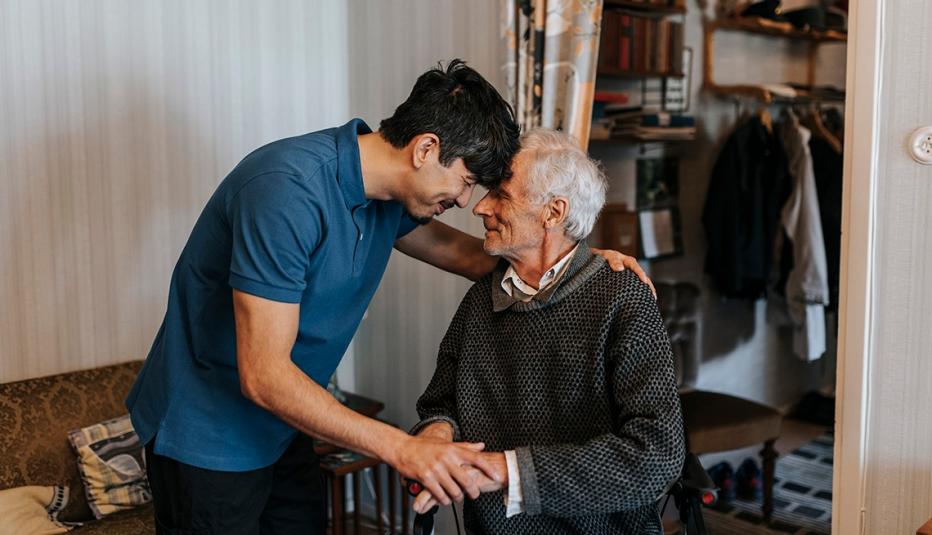AARP Hearing Center
Caregivers pursuing bachelors or other degrees face increased emotional distraction and financial strain that educational institutions could ease by implementing some basic policies and support systems, a recent AARP study revealed.


The academic, economic, and emotional toll for students with added caregiving responsibilities is clear. Seven in 10 student caregivers reported that their caregiving duties impacted their ability to handle academic commitments, the study found, while six in 10 said that they have struggled to pay for school. Emotional distress (and the resulting distraction) was the most commonly cited impact, but about one-third struggled with late assignments, missed classes, and lack of test preparation because of their caregiving duties.
Still, many of these student caregivers keep the stress hidden from school officials who may be best positioned to lend help, including financial aid departments and student health centers.
Balancing Responsibilities
Slightly more than half of students (56%) entered school knowing they would be balancing caregiving duties and academic rigor. Nearly one in ten (8%) took on caregiving responsibilities as they began school, leaving about a third of students to navigate the world of caregiving after they had already enrolled in classes.
Not surprisingly, students who spent more hours on caregiving experienced greater hardship in managing their dual roles and an increased concern about being able to continue their education, the study authors found. Most student caregivers (86%) also work at least part-time, the survey found, which adds to the challenge.
Overwhelmingly, students said that caregiving provides a sense of purpose, and almost seven in ten (65%) reported that providing care while attending school is not a challenge. The reality, however, is more nuanced. The academic, financial, and emotional stress can take a toll. Seven in ten student caregivers reported being at least somewhat concerned about their ability to continue school while providing care, and nearly a third (30%) said they are very concerned about continuing the balancing act.
Hidden Stress
Four in ten (43%) student caregivers keep their caregiving responsibilities private. A third of caregivers (32%) simply said they didn’t think it was necessary to inform the school. Others said they thought school officials wouldn’t understand.
One-quarter of student caregivers (26%) reported being discriminated against by someone at their academic institution due to their caregiving responsibilities. Judgment from peers and a lack of understanding from instructors were the most common grievances.
When caregivers do open up, it is most frequently with a classmate, with four in ten (41%) reporting that they told a fellow student.
Student caregivers don’t have an obvious choice about which school official to inform. Instead, whom they choose to confide in varies, likely based on whom they were most comfortable with or how the dual responsibilities of school and caregiving were affecting them. Among the caregivers’ confidants were instructors/professors (36%), academic advisor (34%), financial aid department (30%), student counseling center (27%), school health center (20%), and resident assistant (17%).
Most students feel supported, even if they are guarded in telling others about their caregiving responsibilities. A vast majority of students (86%) said they are satisfied with how their school treated them. And nearly two-thirds of students said their instructor or professor was very or somewhat supportive.
A Mutual Responsibility for Improvement
From the academic institution’s perspective, early identification of student caregivers is key. Student caregivers should be encouraged to inform their schools, but academic institutions must create a caregiver-friendly environment that fosters this communication.
By developing policies, promoting available resources, and training staff (especially teaching staff) about meeting the needs of student caregivers, academic institutions can build an environment that fosters success and reduces unnecessary stress.
In particular, schools could make a difference by providing student caregivers of adults with the same support that they provide for parent caregivers of minor children. While just one in 20 (5%) adult caregivers reported their school had policies and guidelines to support them, nearly a third (31%) perceived that their school had policies and guidelines in place to support caregivers of minors, the study found.
Flexibility is the most obvious solution. More than half of student caregivers seek policies that include flexibility with deadlines and attendance. More broadly, the study’s authors suggest schools consider more flexible policies in general, as well as tuition policies that do not penalize student caregivers for course withdrawals.
Methodology
AARP conducted an online survey via AYTM Panel of 400 U.S. adults 18 and older June 24–26. All participants were both students and caregivers.
For more information, please contact Laura Skufca at lskufca@aarp.org. For media inquiries, please contact media@aarp.org.



































































